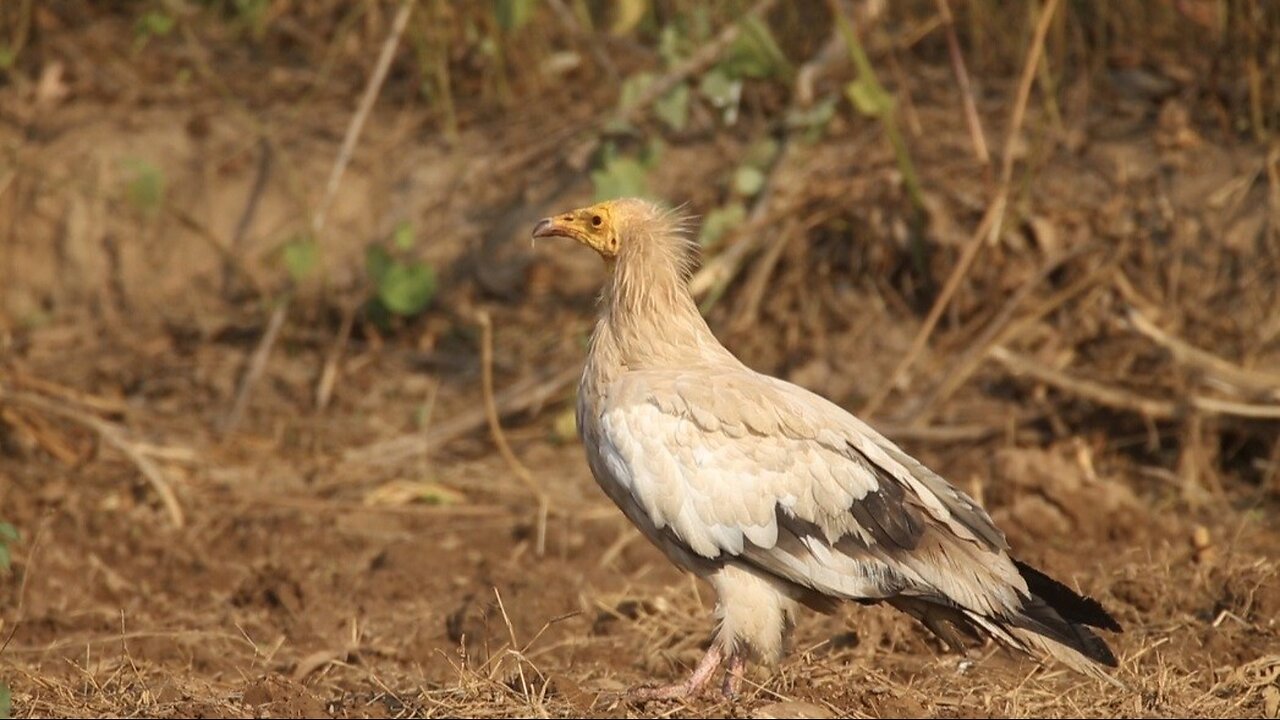Premium Only Content

"Majestic Egyptian Vulture: Nature's Cleanup Crew in Action"
The Egyptian vulture (Neophron percnopterus) is a striking bird of prey known for its distinctive appearance and vital role in the ecosystem. Here’s an overview of its key characteristics and importance:
Physical Features:
Size: Medium-sized vulture, with a wingspan of about 1.65–1.7 meters (5.4–5.6 feet).
Plumage: Adults have white plumage with contrasting black flight feathers, a sharp contrast when they soar in the sky.
Head: Its small, bare, yellowish face is unmistakable, with piercing dark eyes.
Beak: The slender, hooked beak is perfectly adapted to scavenging.
Tail: A wedge-shaped tail, adding to its aerodynamic form in flight.
Behavior and Feeding:
Diet: Egyptian vultures are scavengers, primarily feeding on carrion (dead animals), which helps prevent the spread of disease by cleaning up decaying matter in their environment.
Tools: Uniquely among birds, Egyptian vultures are known for using tools. They use rocks to break open large eggs, such as those of ostriches.
Role in the Ecosystem: They play a crucial role in maintaining environmental health by consuming waste and reducing the presence of harmful bacteria and pathogens in decaying carcasses.
Habitat and Range:
Geographic Distribution: These vultures are widespread, found across southern Europe, North Africa, and parts of the Middle East and Central Asia. They prefer open landscapes like savannas, deserts, and semi-arid areas.
Migration: Many populations of Egyptian vultures are migratory, traveling between breeding and wintering grounds.
Conservation Status:
Threats: The Egyptian vulture is currently classified as "Endangered" by the IUCN. Major threats include habitat destruction, poisoning (often due to ingesting lead or toxins from carcasses), and collisions with wind turbines or power lines.
Conservation Efforts: Conservationists are working to protect this species through breeding programs, anti-poisoning campaigns, and habitat preservation.
Cultural Significance:
Symbolism: In ancient Egypt, the vulture was a symbol of protection and motherhood, often associated with the goddess Nekhbet. Egyptian vultures were revered for their role as nature’s cleaners, safeguarding the environment.
This species is a fascinating example of how nature's less glamorous creatures play a vital part in maintaining ecosystem balance, and their majestic presence in the wild highlights the interconnectedness of all life.
-
 20:05
20:05
Preston Stewart
13 hours ago $1.59 earnedCrimea Raid to Chasiv Yar Fight
10.9K8 -
 8:11
8:11
Millionaire Mentor
15 hours agoTulsi Gabbard and Leavitt DOUBLE-TEAM Kaitlan Collins in FIERY Exchange
8.87K6 -
 46:02
46:02
Coin Stories with Natalie Brunell
1 day agoWhat They’re Hiding About the Economy | Natalie Brunell with Danielle DiMartino Booth
42K13 -
 12:12
12:12
GritsGG
14 hours ago23 Warzone Wins in a Row! (Cypher AR)
84.1K3 -
 2:12:07
2:12:07
Side Scrollers Podcast
21 hours agoCULTURE SHIFT CAUSES MELTDOWNS + MASSIVE CENSORSHIP EFFORTS RAMP UP | SIDE SCROLLERS LIVE
26.8K12 -
 11:25
11:25
Nikko Ortiz
1 day agoMost Painful Fails
57.9K30 -
 43:55
43:55
pewculture
6 days ago $5.64 earnedIf the Purge was real, this is what we'd do... - EP#24
23.5K7 -
 8:14
8:14
MattMorseTV
1 day ago $11.88 earnedTrump just DROPPED the HAMMER.
66.3K84 -
 LIVE
LIVE
Lofi Girl
2 years agoSynthwave Radio 🌌 - beats to chill/game to
287 watching -
 22:39
22:39
BlabberingCollector
12 hours agoThe Alphabet Mafia Is Mad At JK Rowling AGAIN
25.5K6